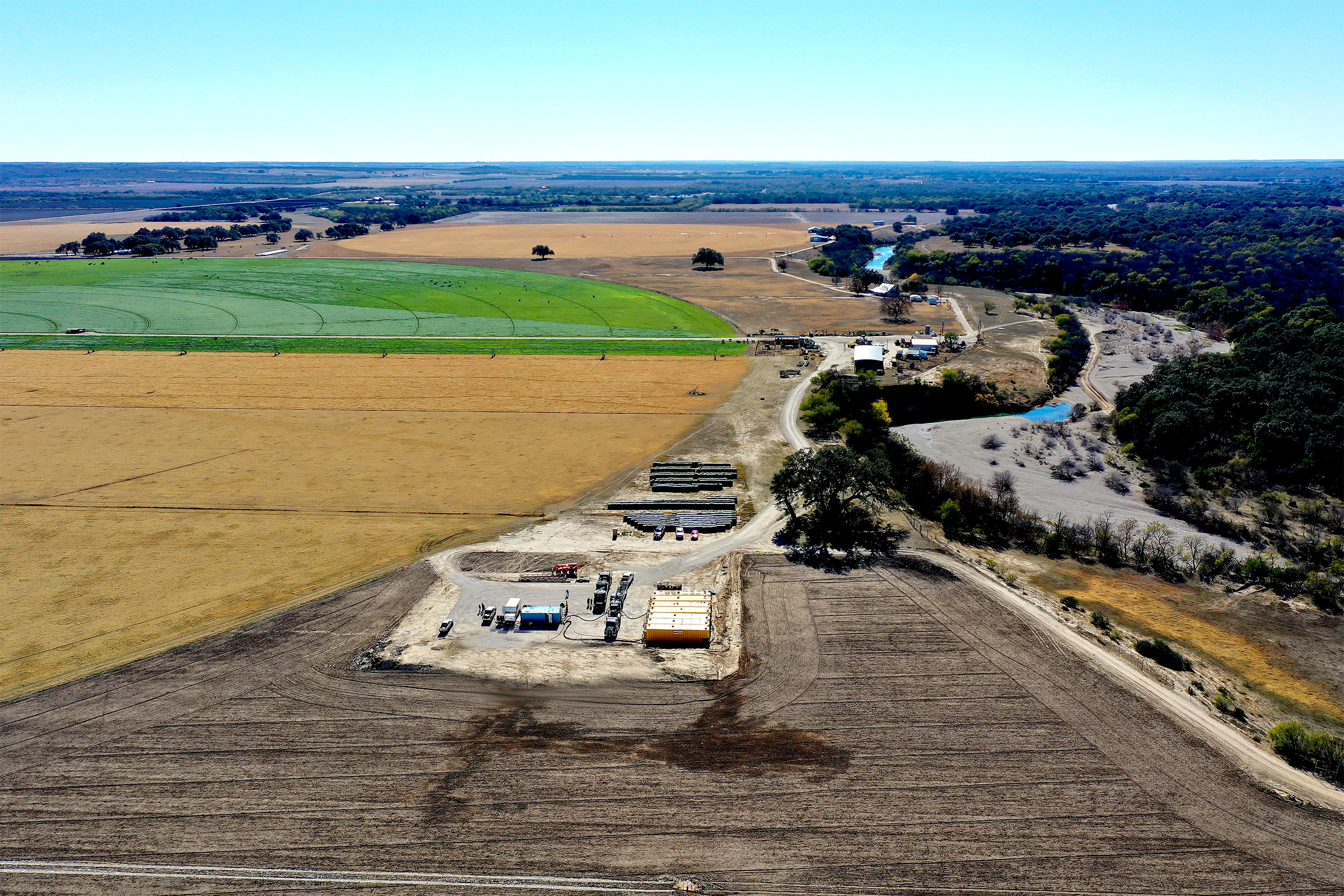CPS Energy, San Antonio’s municipal power company, has agreed to test technology that uses pressurized water underground to store renewable energy.
The system was designed by a company called Quidnet. The agreement is for a small-scale pilot project. But according to Diego Mendoza-Moyers, the technology can be easily scaled. Mendoza-Moyers is a business reporter for the San Antonio Express-News. He spoke to Texas Standard about how the system works. Listen to the interview above or read the transcript below.
This transcript has been edited lightly for clarity:
Texas Standard: Tell us a bit more about how this technology works.
Diego Mendoza-Moyers: It’s a pretty simple technology. They set up these fairly simple operations where they’ve got some tanks of water and kind of an equipment room and a hydraulic fracturing well. And they drill a well and they use electricity to force water down, and it pools out about 1,000 feet below the surface and it sits there under real high pressure. And the idea is you use cheap electricity to force it down there. And say, on a hot summer day when CPS really needs more power, they can tell Quidnet to force that water up from deep underground. And when it shoots up at the high pressure, it spins a turbine and it can generate anywhere from maybe one megawatt to 10 megawatts of electricity to power a few hundred homes.
So it’s not like battery storage technology in the way that we think of chemical reactions or anything.
Exactly. It’s called geomechanical pump storage – kind of similar to hydroelectric dams that simply let water pass through to spin turbines. So it’s really a lot simpler. No chemical agents require like a traditional fracking.
It’s not so much a solution to the problem of generating energy by renewable power like, say, wind turbines and then trying to figure out, what do you do with that electricity. This, in a way, becomes a new source and storage for potential energy?
We can’t control when the sun and wind are producing energy. I f you think about solar production, which obviously is at zero before the sun rises and kind of goes up into a bell and maxes out around maybe noon or two p.m.. The idea is when the production isn’t at its peak at 12:00 to 2:00 p.m., let’s shift that peak by storing electricity. Let’s store that solar energy when it’s at its peak – force it down into the Earth – and when no electricity demand is at its highest, and when people are getting home, cranking the AC up, or the heater later in the day, the idea is, let’s call on that facility we stored – that solar energy –now. Let’s pump it up when we need it later in the day when demand is higher and power on the market’s more expensive.
You mentioned the fracking similarity. A lot of people have talked about how wastewater has been linked to seismic activity in parts of the oil patch that give that kind of thing. Is there any concern that this might also have similar effects?
I think that the idea is, it’s quite a bit different, right? Because you can locate these really anywhere, and you wouldn’t have the sort of concentration like in, say, the Permian Basin or something like that, right? The idea is you can sort of locate these things, maybe in sort of areas near a distribution hub or transmission hub. And I think the concentration would have less of an effect in terms of seismic activity or things like that.
What are the challenges associated with scaling up this technology? I mean, I understand how theoretically this would work. But has it been tested in the real world, and how much energy can you actually store?
So, compared to other technologies, it’s actually pretty scalable. And part of that is because, like we said, the supply chain already exists for this technology? They are just really repurposing technology that’s already used in fracking fields. And on top of that, the expertise of the employees already exists. Because a lot of these people that work for Quidnet worked for oil and gas from previously. So there’s already an established supply chain, established knowledge. So that makes scalability a little bit easier and quicker. It also says these systems cost about 50% of traditional battery storage systems. So the idea is it’s cheaper. There’s already kind of established expertise, so it’s actually more scalable in theory than some other kind of technologies that might be further out, such as hydrogen or other battery technologies.
How does this fit in within CPS Energy’s own long-term resilience strategy? Is this what people have been waiting for, or is this just part of the answer?
CPS Energy’s kind of got a black eye over the last couple of years. Winter storm Uri was a big kind of PR hit, and they’ve they had to raise rates recently. So I think this is an effort to show their customers, “hey, we’re trying to be innovative here” because they’ve kind of dragged their feet. I think executives there would admit that they dragged their feet on their plans to add more solar generation, more battery storage. Now it’s really just a pilot project. It’s like one megawatt. So it’s a small-scale project, but I think it’s them saying, “we’re thinking towards the future.”
















